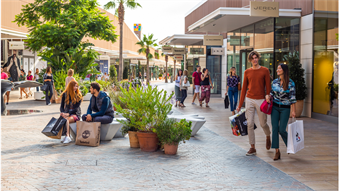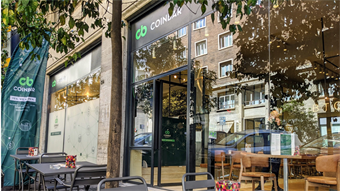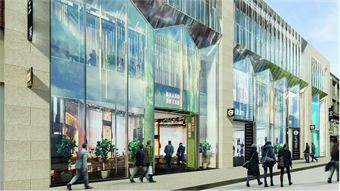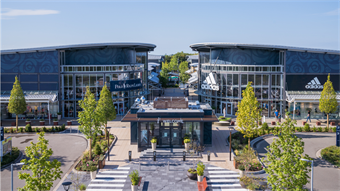London: The retail centre of the world
- In City in Focus
- 11:16, 10 november 2017
- 2222 Views
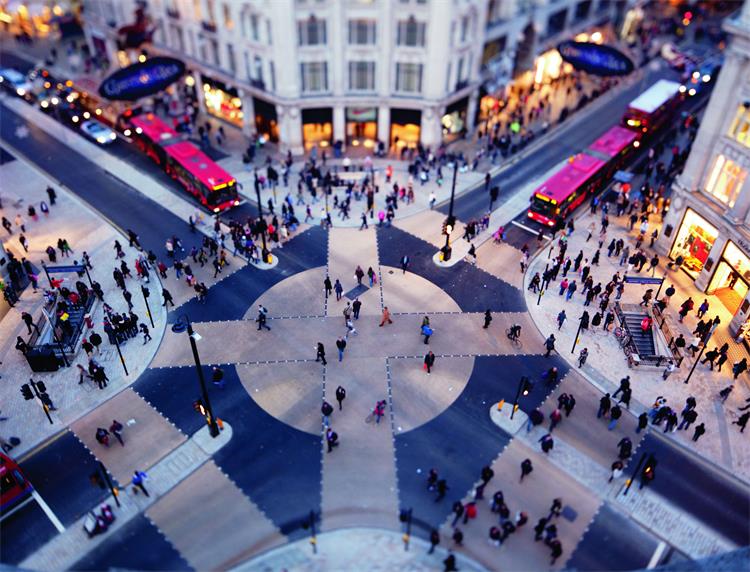
London regularly tops the table for the world’s most attractive retail cities. But can it keep its top spot after Brexit?
Globally London ranks second only to Hong Kong for retail expansion, according to CBRE’s 2017 report How Global is the Business of Retail. The report found that the majority of new retail brands opening in London originate from the US, demonstrating that London continues to be a magnet for international retailers wanting to establish their brand before expanding into Europe, the Middle East and Africa.
According to London’s New West End company, £9 bn (€10 bn) is spent in the West End every year. And despite Brexit jitters, like-for- like sales across the UK rose again in September, by 2.9%, the best month for sales in over three years, according to BDO’s October High Street Sales Tracker.
Despite these figures, the New West End company (which represents 600 retail, restaurant, hotels and property owners across the city’s key retail locations of Bond Street, Oxford Street and Regent Street), is concerned about the uncertainty surrounding the UK’s exit from the European Union.
‘Although the West End has seen a marked increase in spend from international visitors since the Brexit vote, largely as a result of the devaluation of the pound, this is not necessarily a fixed guarantee for economic prosperity over the next few years,’ says CEO Jace Tyrrell. ‘It is crucial to keep retail issues on our government’s radar, and remind partners that the West End is a huge economic asset to the UK - and must therefore be protected as we enter the unknown.’
Perhaps the biggest opportunity, says Tyrrell, lies with the opening of the new Elizabeth Line in 2018. With two new Crossrail stations opening at Tottenham Court Road and Bond Street, the area is gearing up for its arrival and the New West End company wants to ensure that street-level experience matches up to the passenger journey unfolding at platform-level.
‘West End businesses are committed to capitalising on the opportunity that will come with the anticipated 60 million additional visits to the West End each year that Crossrail will bring,’ he says. ‘The Elizabeth Line is set to transform London, and it is exciting that the West End will be at the very heart of that transformation.’
Retail repurposing to support changing demand
London is still one of the world’s most dynamic destinations, thanks to the city’s ability to adapt fast to changing retail demand. ‘We are seeing a lot of repurposing of retail space,’ says Caitriona Hunter, director at CBRE Global Investors. ‘As an example, some of our biggest department stores are looking at alternative uses. John Lewis is considering putting in work stations that business people can rent. Another department store is looking at turning two of its floors into a hotel.’
However, the rising trend for internet shopping has brought new entrants onto the high street. Manufacturers with strong brands are moving closer to their customers, including Dyson on Oxford Street and Tesla at Brent Cross and Westfield shopping centres, and also at Canary Wharf.
Recently another car manufacturer, Seat, opened its first London retail store, a 610 m2 unit at Westfield London, Shepherd’s Bush which includes a ‘experience centre’ along with Seat merchandising and a ‘connectivity bar’.
Microsoft is also planning to open its first UK store in London, on Regent Street. It will showcase gaming, mixed reality, artificial intelligence and more, says the company. The rise of entertainment is changing retail store formats. ‘Lego isn’t concerned where people buy, they want customers to enjoy playing with the bricks in store, and whether they buy there, or later online, isn’t an issue for them,’ says CBRE Global Investors’ Hunter. ‘It’s all about the experience and community.’
Many of London’s transport hubs have changed beyond recognition. CBRE Global Investors manages two big transport hubs in London, at Hammersmith and at Fulham. Rental growth in them is rising as new operators vie for space. ‘It used to be all about “grab and go”, now there’s more retail variety and some retailers, such as Boots the Chemist, are moving in and taking smaller retail units than they would otherwise take in shopping centres. They want to be everywhere,’ says Hunter.
The rise of Food & Beverage
The greatest amount of repurposing in London’s retail centres in recent years has been because of the rise of food and beverage operators, with a lot of the city’s bigger shopping centres now seeing around 20% of space dedicated to F&B. In transport hubs, it’s 60% of available retail space, says Hunter.
However, the meteoric increase of F&B finally seems to be slowing down. ‘We are seeing saturation in some areas, and there are food outlets which will not survive,’ says Hunter. ‘Many food & beverage operators are backed by private equity who are simply looking to gain turnover. While I think the UK has changed its culture and many see eating out as a non-discretionary expenditure, only the best operators will survive.
‘We are seeking to let a retail unit at Fulham tube station’s ticket hall to a creative operator, rather than the usual multi-site popular food operator. We are not abandoning the landlord’s ambition for yield and certainly, the operator is well established and well backed financially, but it is important to create a different offer.’
Rising population drives retail expansion across London
The Brexit effect has seen some of London’s big financial companies shedding jobs, but the city’s population is rising, thanks in part to a growing tech and creative community. The UK capital currently has a population of 8.8 million, a figure which is predicted to continue rising. London also has a much younger population than the rest of Britain, with a median age of just 34. Only 11.6% of Londoners are aged over 65.
London’s hot retail spots, particularly for tourism, continue to be the area around Oxford Street, Bond Street and Regent Street, but there is also a significant shift north where King’s Cross is undergoing a massive repositioning.
Another area where the excitement is growing is Battersea, South West London. And Shoreditch, which became home to the world’s first pop-up mall at Boxpark in 2011, continues to attract some of the city’s coolest stores and restaurants, particularly on Redchurch Street.
According to Appear Here, which pioneered the renting of shops, markets and pop-ups in London and around the world, the rise of Redchurch Street has been going on for a few years. In that time, this once shabby street in central Shoreditch has become a natural home for popular local boutiques and established brand favourites, such as Aubin & Wills, Labour and Wait and 11 Boundary womenswear.
Battersea, a new centre for London
The iconic Battersea Power Station is finally being redeveloped after decades of neglect and failed development strategies. The project got a big boost in September 2016 when tech company Apple announced plans to relocate 1,400 of its employees, currently based in an office at Oxford Circus, to a new headquarters comprising 152,000 m2 of space inside the converted riverside power station, in 2021.
‘Apple’s early commitment to Battersea will be a big encouragement to other brands,’ says Caitriona Hunter, director at CBRE Global Investors.
The Battersea Power Station Development company, supported by Malaysian financial groups SP Setia Berhad, Sime Darby and Employees Provident Fund, is bringing the enormous listed building and surrounding area back to life as an innovative mixed-use neighbourhood – a place for locals, tourists and residents to enjoy restaurants, shops, parks
and cultural spaces, says the company. The £9 bn (€10 bn) development includes a new underground train station, 38,000 m2 (1.25 million sq ft) of office space, over 4,000 homes, a concert hall and cultural space, as well as retail. It is scheduled for completion in 2026.
The company predicts that Battersea Power Station will become one of the biggest retail destinations in London. Stores and restaurants are now beginning to open at Circus West Village. These include Boom Cycle, an indoor spinning fitness centre which opened its first gym in Shoreditch in 2011, and restaurants including Danish pizza restaurant Mother and café bar No. 29 Power Station West.
King’s Cross, London
Visitors heading to King’s Cross, London would be hard put to imagine that it was once an underused, industrial wasteland which was also home to one of the city’s biggest railway termini. Now the 67-acre (27-hectare) site is being transformed into a new part of the city with homes, shops, offices, galleries, bars, restaurants, schools and a university.
When the regeneration is completed in 2020, the mixed-use development being undertaken by developers Argent will comprise 50 new buildings, 1,900 new homes, 20 new streets and 26 acres (10 hectares) of open space. The location is already home to thousands of workers, residents and students from Central Saint Martins, the renowned arts and design college and part of University of the Arts London.
By 2020, 45,000 people a day will benefit from 152,000 m2 of retail and leisure, 180 retail units, 2,000 homes, 1.03 million m2 of office space and a projected annual retail spend of £1.6 bn. Central to King’s Cross retail offer is King’s Boulevard, linking the transport hubs of King’s Cross & St Pancras to Granary Square. The traffic-free Coal Drops Yard is at the heart of the retail area.
Nike’s Central, its new global retail concept, was one of the first to open and King & Boulevard was the first in the world. Jigsaw has opened a 762 m2 store and & Other Stories, a one-stop styling destination founded in 2010, will open its fifth London store in a 1,800 m2 space on King’s Boulevard. 18montrose has also opened a 500 m2 space designed as a gallery, showroom and shop, and Carhartt Work In Progress (WIP) has opened a 762 m2
store designed by Faye Toogood.
Hybrid stores are also part of the King’s Cross mix. Spiritland is a cafe and bar built around a world-class sound system. A cafe and workspace by day, and bar by night, the venue also hosts Spiritland Sound Studio, a radio production suite. There’s also a shop selling music vinyl, headphones, record bags and musical equipment.
In September, design brand Tom Dixon announced it would relocate to a 5,334 m2 complex at King’s Cross to create a new global headquarters housing a flagship shop, showroom, office, restaurant and café. There are around 50 units in Coal Drops Yard and Argent is in negotiations on around 30. Contracts have been exchanged on four and another 10 are going through legal procedures.
‘King’s Cross provides a great physical mixed-use environment for brands,’ says Craig White, project director at Argent. ‘We are helping them take their brands to the customers, digitally and physically.’
London’s retail Olympic legacy
Westfield opened its Stratford City shopping centre a year ahead of the 2012 London Olympics. With over 250 shops, over 80 places to eat and drink, cinema, hotels, and other leisure activities, the £1.75 bn development attracted 48 million visitors in the Olympic year.
Now a £2.4 bn mixed use development is under way next to Queen Elizabeth Olympic Park and Stratford International train station which will eventually house over 25,000 workers when completed on 2025.
Around 15,900 m2 (52,000 ft2) of shops, restaurants and cafes will sit alongside 1.22 million m2 of grade A office space and 333 new homes. The Financial Conduct Authority, Transport for London, Cancer Research UK and British Council have agreed leases on office space, bringing the total number of people soon to be working at the development to over 8,000.
Alongside the International Quarter, the former athlete’s village, East Village, is becoming London’s newest neighbourhood. Nearly 6,000 people, and 23 retailers, many independent, now call East Village home, and over the coming years it’s set to grow further.
Delivering a world class retail destination
The New West End Company is working to make London’s West End the world’s first choice for shoppers, retailers and investors.
So far this year, 65 new stores have opened across the New West End’s core area: Oxford Street, Bond Street and Regent Street, compared with 52 last year. All streets are undergoing transformations in preparation for the 60 million additional visitors expected from the Elizabeth Line each year by 2020. In April, a £10 mln redevelopment of Bond Street began to overhaul the public realm. The project will be completed in 2018.
Regent Street has also recently seen an impressive transformation, thanks to a £1 bn investment from The Crown Estate. The shopping and visitor experience has been improved and the retail offer has diversified, with new brands joining its roster of flagship stores.
Regent Street has welcomed 15 new stores so far, with world-first openings like fashion brands Arket and Weekday choosing this particular street to set up their flagship shop.
For the past three years The New West End Company has been led by Jace Tyrrell. We asked him how he plans to make one of the world’s top retail destinations even more attractive.
What are the key issues for central London’s retail landscape?
There are a number of live issues facing London’s retail landscape, with business rates particularly prevalent among them. Last year New West End Company led a campaign to call for transitional relief on the huge hike in rates proposed by the government. As a result we saved over £10 mln in business rates for West End businesses over the next three years and secured access to a further £20 mln local relief fund.
London’s retailscape is constantly on the lookout for ways to evolve in order to remain competitive against their online counterparts. People love to visit the West End to get the full bricks-and- mortar retail experience, and combining this with the digital ease that comes with online shopping by adding new technology in stores, we are looking to cultivate a unique and rounded retail offer.
What is the New West End Company’s strategy for retail growth?
We want to continue diversifying the retail offers across our key streets by encouraging new brands to become part of the fabric of the West End. We also want to encourage investment in our existing businesses in order to help them flourish. Key to this and in parallel to the opening of the Elizabeth Line in the West End in December 2018, is our work in partnership with Westminster City Council and Transport for London to realise a new vision for the Oxford Street district.
We want to see traffic-free elements on Oxford Street during the hours of 10 am and 10 pm. We will also be championing more traffic-free days on Regent Street. We are also encouraging a more innovative use of space on the street to create a more rounded visitor experience, such as greener spaces and unique pop-ups. As well as great shops, we want Oxford Street to be celebrated for its night-time economy.
The West End goes digital
This year New West End Company piloted London’s first-ever ‘smart street’. Located on Bird Street, close to Oxford Circus and iconic West End stores such as Selfridges, the street combines pave-gen technology, creating energy that powers the street lights, and purifying wall paint that cleans the air along the street. It also houses a diverse mix of pop-ups, offering smaller businesses and start-ups the chance to set up shop in a prime retail location. New West End Company is installing Wi-Fi across the district within the next three years.


